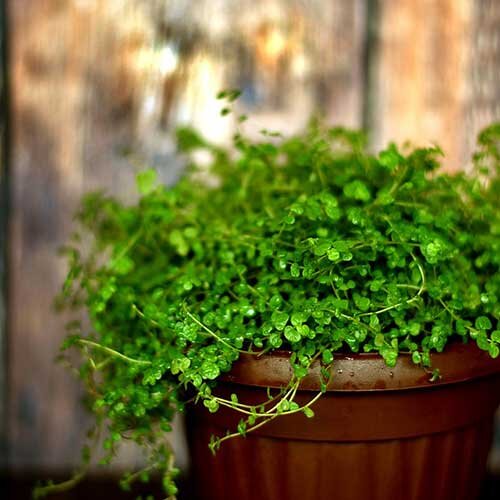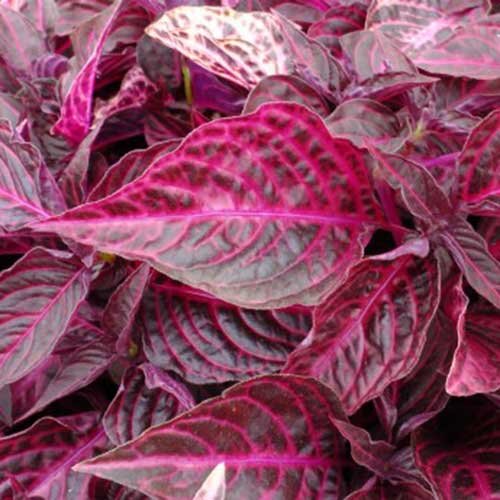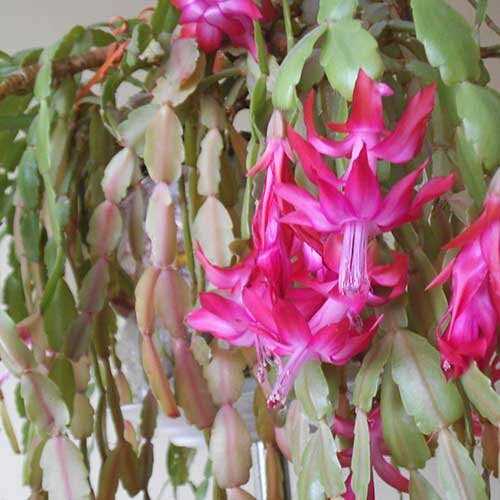Kid-friendly Classroom Plants
I do love using plants in the classroom but sometimes I worry that the plants I have may be poisonous. Not that any children in my care have ever eaten or even attempted to eat any of our classroom plants, there’s always a chance this might happen.
I have a large collection of artificial plants. They always look good and don’t need any care – other than an occasional hose down to clean them. The benefits of using real plants far out-weigh using artificial plants though.
Real Plants Can…
Teach children how to care for living things.
Foster a love of nature.
Purify the air.
Provide oxygen.
Enhance your décor.
I have done some research and compiled an illustrated list of child-safe classroom plants and even included some growing tips too. I’ve cross-referenced a few internet sources but it’s still advisable to observe your children closely when you've introduced a new plant to your classroom. Some children may have allergic reactions to certain plants.
Please make sure the plants you choose for your classroom are properly identified. Some indoor plants have many different names. Do a little research and be sure of the kind of plant you have.
African Violet
(Saintpaulia)
African violet plants are fussy about watering. Water at the base and never splash the foliage with water or you will damage the leaves. The plants with the darker green leaves usually need higher light levels than those with pale or medium green leaves.
Aluminum Plant
(Pilea Cadierei)
The Aluminum plant is an easy going indoor plant as long as it gets the water and sunlight it wants. This plant does not like direct sunlight. Too much sun will burn the leaves and cause the green parts to turn brown. During Spring and Summer, the top few centimeters of soil should be kept moist but during Autumn and Winter, allow the soil to dry out before watering again. Try not to let the water stand in the saucer underneath the plant.
Baby’s Tears
(Soleirolia Soleirolii)
Baby’s Tears is a spreading plant that spills over the sides of the pot. It cannot grow too far though as the stems need to have contact with the soil. Your children will love trimming this one with scissors. Baby’s Tears will grow in low light but it prefers bright, indirect light. You need to keep it out of direct sun or you will scorch the leaves. This plant needs to be kept moist at all times. It will not tolerate dry soil at all.
Begonia
(Begonia Obliqua)
Begonias are not toxic to humans but they may sometimes cause allergic reactions. There are different types of begonias. Wax begonias have succulent stems and shiny, rounded, green or reddish-brown leaves. Tuberous begonias come in two forms, either upright or trailing, and have green or burgundy leaves. Angel wing begonias have attractive year-round foliage with speckles or streaks on their dark green leaves. The quickest way to kill any begonia is to give it too much water. It’s important to let them dry out slightly between waterings. Begonias don’t tolerate direct sunlight or dry air drafts either.
Bloodleaf
(Iresine Herbstii)
The red leaves of this plant are often variegated with green and white markings. They like a hot climate and high humidity. Place the plant in a bright spot. If it becomes leggy then it probably isn’t getting enough light. They like moist conditions so try not to let the soil dry out. You can water them less in Autumn and Winter.
Boston Fern
(Nephrolepis Exaltata)
Boston ferns love a cooler place with high humidity. They don’t require much light. Boston ferns don’t like it when the soil dries out and it’s a common reason for them to die. They will do well if you soak the pot about once a month in a sink. Make sure to let it drain thoroughly after a soaking so the roots don’t rot.
Bromeliad
(Guzmania)
These plants require a heavy pot as they tend to be a bit top heavy. Bromeliads are really easy to care for. They require low light and should be kept out of any direct sunlight. You water them by putting the water in the central cup of the plant. Try to replace the plant’s water every few weeks or it might rot. Keep the potting mix moist too, especially in Spring and Summer.
Cast-iron Plant
(Aspidistra elatior)
This is a very hardy plant. It grows well in low light and is not too fussy about regular water either. If you don’t have a green thumb and want an easy plant to grow in your classroom, give this one a try.
Crab Claw & Christmas Cactus
(Schlumbergera)
Keep these plants out of direct sun because their leaves will burn. They do need brighter light to bloom and stay healthy. They only need watering every second week. You should water them more often if they are flowering or in hot Summers. If your cactus is changing colour (usually to a reddish shade), that means it’s stressed. Common causes of stress are too much sun or too little water.
Coleus
(Plectranthus Scutellarioides)
These plants grow so easily. You can even grow the cuttings in a jar of water. Water the potted plants weekly because they like a moist soil. They can tolerate full sunlight but prefer a shady spot near a window.
Dracaena
(Dracaena Marginata, Sanderiana, Deremensis, Draco, Cinnabari)
All Dracaena plants like the soil moist, but not soggy. Drooping or yellowing leaves mean you are over-watering or your pot has poor drainage. They like filtered light. These plants are easy care and great for the classroom.
Echeveria Succulents
(Echeveria spp.)
This is a large group of succulents safe for the classroom. They do prefer a well-lit position and will often grow towards the light. They are very easy to look after if you get the watering right. The biggest issue with these succulents is over watering. Give your plant a little water and then let the soil dry out completely before you water it again. Their roots will easily rot if you leave them in a wet saucer.
Hen-And-Chicks Succulents
(Sempervivum)
These succulents are called hen and chicks because of their rosette shape and the ease with which they produce numerous babies. They grow really well indoors in any climate. As they are succulents, they require very little water. A fun class project is learning how to grow hens and chicks by gently pulling the chick off the mother plant and planting it in another pot.
Hoya
(Hoya)
Hoyas can be used as tabletop or hanging plants. They grow quite slowly indoors. The lower the light, the slower they grow. In Summer, water it every week. In Winter, every 2 weeks is fine. Hoya flowers are beautiful and can be found in many colours. They are waxy, star-like blooms but you will need to provide your Hoya with plenty of light if you want it to flower in the classroom. Even then, they sometimes take a few years to bloom and don’t always bloom every year either.
Jade Plant
(Crassula ovata)
Another easy plant to care for. Jade relies on proper watering. Try not to let it dry out completely. It doesn’t need a set watering routine. Just water this plant when the top of the soil feels dry. If it develops leaf spots or starts to drop its leaves, you are watering it too much. They can become leggy if they are not getting enough sunlight.
Lucky Bamboo
(Dracaena sanderiana)
This plant can be grown in water or very boggy soil. They also do well in a container filled with gravel and water. It does not require much light but won’t grow very much in very low light. Any direct sunlight can burn the leaves. These plants are a great classroom plant. Very easy to care for.
Parlor Palm
(Chamaedorea elegans)
Growing a Parlor palm in the classroom is ideal because it grows very slowly and thrives in low light and a cramped space. It’s also an excellent air purifier. Water this one sparingly. It’s better to under water than over water a Parlor Palm. Allow the soil to dry out between waterings. They require even less water in Winter.
Ponytail Palm
(Beaucarnea recurvata)
The Ponytail Palm is neither a palm or a tree. It is a member of the Agave family and is actually a succulent. You can keep this plant in low light conditions half the year and then if you give it a brighter lit spot for the other half of the year, it will be happy in your classroom. Since this plant is a succulent, let the soil dry out in between waterings.
Prayer Plant
(Maranta leuconeura)
This plant is easy to grow but it has specific needs. It is tolerant of low light conditions but does best in bright, indirect sunlight. The prayer plant prefers well-drained soil and requires high humidity to thrive. It should be kept moist, but not soggy. The soil should be kept drier during Winter when the plant is dormant.
Rubber Tree
(Ficus elastica)
Rubber trees don’t like to sit in water so a well-draining soil is important. They like filtered light, not direct sunlight. You can tell if your plant needs more light as it will become leggy, its leaves lose their lustre and the lower leaves fall off. In the Summer growing season, it should be kept moist. During the dormant season, you probably only need to water it once or twice a month.
Snake Plant
(Sansevieria trifasciata)
This would have to be the most hardy plant on my list. It only needs watering every 2-6 weeks. It will tolerate low light. These plants don’t like direct sun. They are a wonderful addition to your classroom as they are also one of the best plants when it comes to air purification. They filter out formaldehyde and nitrogen oxide in the air.
Spider Plant
(Chlorophytum comosum)
The spider plant gets this name because of the spider-like baby plants which dangle down from the mother plant like spiders on a web. They are tough plants and will grow happily inside in any light. They do prefer to dry out a bit between waterings.
Swedish Ivy
(Plectranthus verticillatus)
This easy-care plant will thrive in any spot that receives bright, indirect light all year long. It will grow very rapidly with very little maintenance needed. Water the ivy once a week and allow the soil to dry out slightly between waterings.
Weeping Fig
(Ficus benjamina)
These plants don’t like to be moved around the room very much. Best idea is to find a spot and leave them there for the year. They don’t like drafts either. These small trees like a well-lit spot close to sunlight. Over watering and under watering can cause the leaves to drop. Water them less in Winter. Most plants improve air quality to some degree. This one is very good at filtering formaldehyde, xylene and toluene.
Zebra Plant
(Aphelandra Squarrosa)
This one is a bit temperamental. It can lose its leaves and become leggy without the proper care it needs. The zebra plant can be grown in a reasonably well lit classroom but it prefers a fairly high humidity and plenty of warmth. It's also important to keep the soil moist to the touch, and not water logged or too dry.
It’s a good idea to observe your children closely when you've introduced a new plant to your classroom. Some children may have allergic reactions to certain plants.
You don't have to limit your classroom plants to those in my list. There are many outdoor plants that can be brought into the classroom for a few weeks before they are returned to the outdoors.
I’m often bringing in potted herbs and flowering plants to enhance provocations.
Spring Flowers - Painting Provocation



























